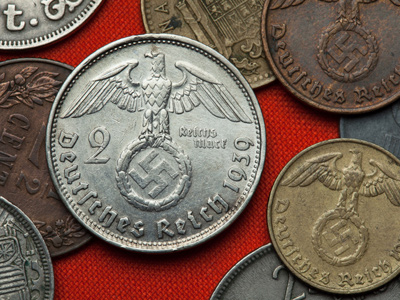
World War One Aftermath: Hitler's Foreign Policy, 1933-1935
This World History quiz is called 'World War One Aftermath: Hitler's Foreign Policy, 1933-1935' and it has been written by teachers to help you if you are studying the subject at senior high school. Playing educational quizzes is one of the most efficienct ways to learn if you are in the 11th or 12th grade - aged 16 to 18.
It costs only $12.50 per month to play this quiz and over 3,500 others that help you with your school work. You can subscribe on the page at Join Us
In 1933 Hitler's Nazi Party came to power in Germany. Hitler immediately forged a new and aggressive foreign policy. He was determined to destroy the Treaty of Versailles, and then to create a German Empire that would embrace all ethnic Germans in Europe.
Ready for more?
not all...
quizzers. Try to win a coveted spot on our Hall of Fame Page.







